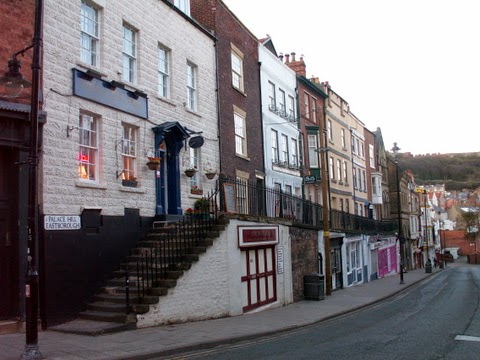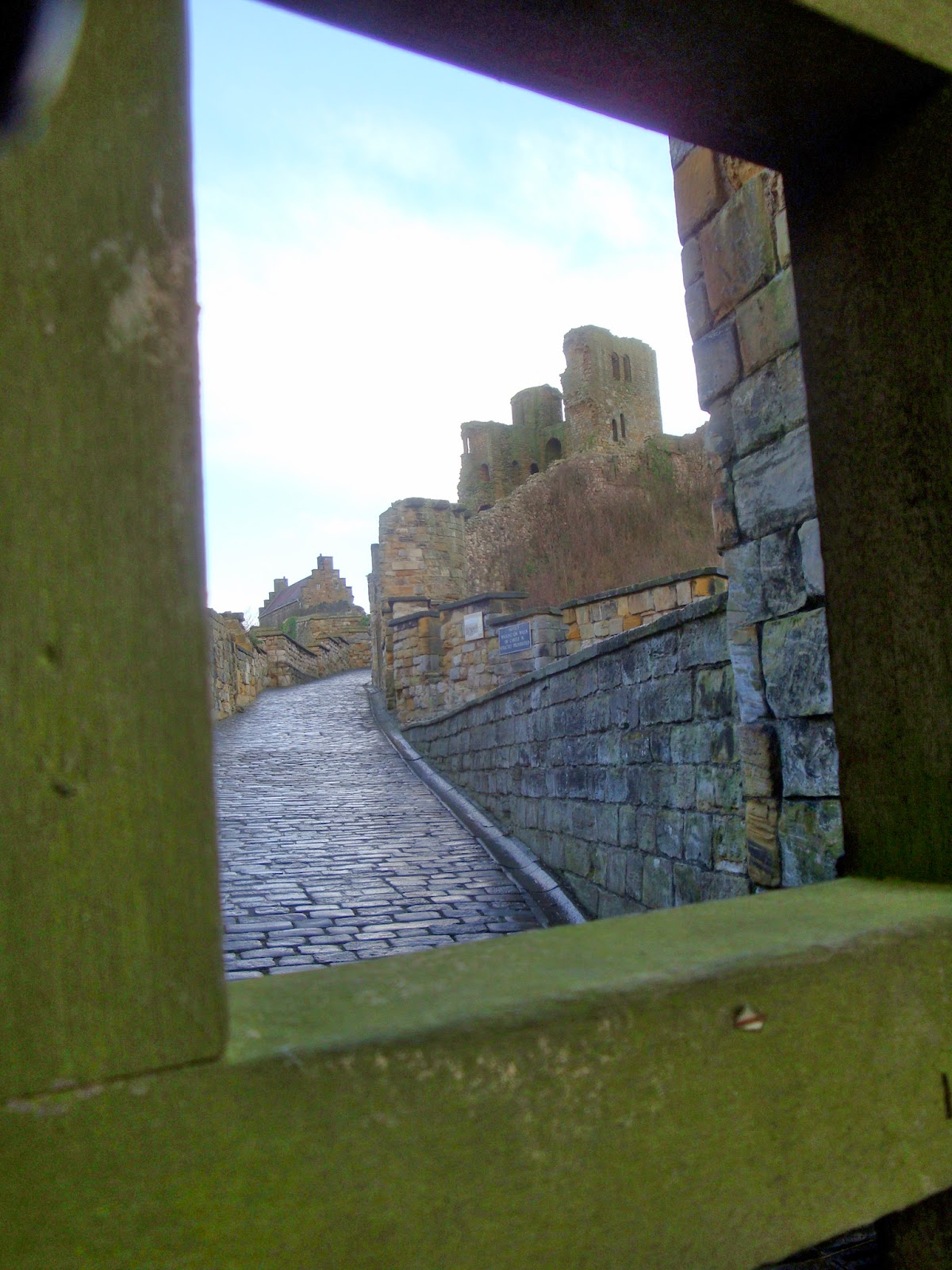The Old Town and the castle
scarboroughsmartheritage.org.uk tells us :
"Scarborough's rich maritime heritage revolves around the Old Town. This comprises the area around the harbour and on the castle hill. The Old Town extends as far as Friargate and Scarboroughs Market Hall. It traditionally ends at the top of the hill at St Marys church. This small area is where the fishermens cottages, quay side and ship yards were all situated. Any historical references to the fishing and seafaring community will feature the Old Town - they all lived in streets such as Longwestgate, Princess Street, and down Sandgate. In the ancient past this was Scarborough. So any seamen naturally lived here. The town has expanded northwards towards Peasholm and southwards towards the Esplanade. Scarboroughs Old Town is still seen as a geographical entity especially by the people who live there. Its known as the Bottom End and the people who live there are known as Bottomenders."
Little is left of the old medieval town around Quay Street alongside the harbour.
A couple of timber framed buildings which probably date to 14th century
are still standing.
The former Three Mariners Inn has been rebuilt into the timber foundation, once the oldest inn in the town, it is now private property and has been renovated into a three bedroomed house whilst retaining much of its originality. The owners believe that it dates to c.1350 and was probably original part of the adjacent property.
Many of the old streets were just steps leading up the hillside.
The Bolts is a passageway leading from the bottom of Eastborough behind the properties facing onto the harbourside.
Eastborough is the main road leading from the foreshore and through the town, becoming Newborough and Westborough to Falsgrave and thence to the A64 leading to York.
Palace Hill is near to the bottom of Eastborough
This old timber framed house in Leading Post Street higher up Eastborough has been renovated to a high standard.
Nearby is another sculpture which depicts a smuggler and his apprentice.
West Sandgate is a cobbled lane leading up the hillside from the bottom of Eastborough into the upper part of the old town and thence up St Mary's Street to the Parish Church.
The old Leeds Arms pub has a panel on the gable end with the dates 1593 and 1900.
Part of the medieval town is still standing opposite the pub, the Grade 1 listed remains of the market or butter cross, probably some 600 years old. It seems a little out of place alongside modern development but this is the area where the Saturday Market place would have been.
Street markets ceased to be held when this Market Hall
was built in 1853 where the old borough and the new borough met.
The old Quaker Chapel and burial ground is nearby.
Princess Street runs across the middle of the old town with its fine Georgian houses formerly owned by ship owners, ship's captain's and the like, and joins up with Castlegate which leads steeply up to the castle.
















































1 comment:
Post a Comment